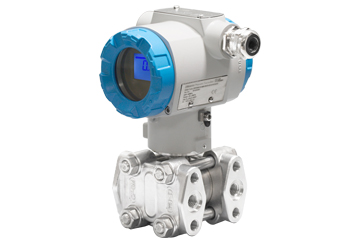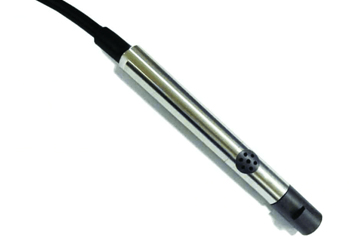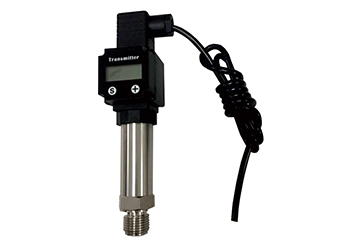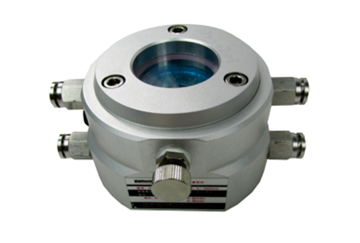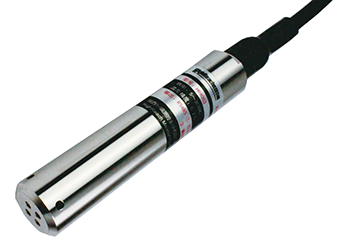Related parameters
Structure drawing:

1 – Protection shell | 2 – Sensor cleaning brush |
3 – Sensor electrodes | 4 – Sensor base |
5 – Sensor housing | 6 – Signal output interfaces |
7 – Retaining ring |
|
III Sensor Specifications:
3.1 Conductivity / temperature sensor
The conductivity and temperature are integrated into the same sensor, which not only provides accurate conductivity values and temperature values, but also the conductivity values provided by this sensor can be used to calculate salinity, specific conductivity and total dissolved solids, and the temperature data provided can be used for temperature compensation of other sensors on the HR4000.
Specifications(Conductivity):
Measurement principle | Four-electrode method (physics) |
Measurement range | 0~200mS/cm |
Accuracy | 0~100: readings ±0.5%; 100~200: readings±1% |
Resolution | 1μS/cm~100μS/cm(depend on range) |
Temp. compensation | Yes |
Working Temp. | 0~50℃ |
Storing Temp. | -20℃~+60℃ |
Calibration method | Single or two-point calibration |
Specifications(Temp.)
Measurement principle | Thermistor |
Measurement range | 0~50℃ |
Accuracy | ±0.2℃ |
Resolution | 0.1℃ |
Working Temp. | -5~+50℃ |
Storing Temp. | -20~+80℃ |
Calibration method | Single point calibration |
3.2 pH
The pH reflects the acidity and basic characteristics of a body of water. pH 7.0 is neutral, values below 7.0 are acidic, and values above 7.0 are alkaline. The pH sensor utilizes a new dual salt bridge structural design, which increases stability for long-term monitoring, extends the life of the sensor. It has the features of easy to clean, rugged, corrosion resistant, and many other features.
Specifications:
Measurement principle | Electrode method |
Measurement range | 0~14 |
Accuracy | ±0.1 |
Resolution | 0.01 |
Temp. compensation | Yes |
Working Temp. | 0~50℃ |
Storing Temp. | 0~60℃ |
Calibration method | Two or three points calibration |
3.3 ORP
The ORP sensor is a composite electrode that integrates a measuring electrode and a reference electrode, which responds to the redox properties of the water.
Specifications:
Measurement principle | Electrode method |
Measurement range | -1999~+1999mV |
Accuracy | ±20mV(Standard liquid) |
Resolution | ±0.1mV |
Temp. compensation | Yes |
Working Temp. | 0~50℃ |
Storing Temp. | 0~60℃ |
Calibration method | Single point calibration |
3.4 Turbidity
Turbidity reflects the degree of turbidity of the water body. Turbidity sensors use the 90 ° scattered light detection principle, the infrared light emitted by the light source through the measured particles in the water after the scattering by the photoelectric detector converted to electrical signals, and through the digital signal processing to get the turbidity value of the water samples.
Specifications:
Measurement principle | Scattered light measurement |
Measurement range | 0.01~4000NTU |
Accuracy | 0~10NTU: ±0.1NTU; 10~100NTU:Readings ±2% or ±0.1NTUtake the biggest one 100~4000NTU: Readings ±5% |
Resolution | 0~10NTU:0.01NTU; 10~100NTU:0.1NTU; 100~4000NTU:1NTU |
Temp. compensation | Yes |
Working Temp. | 0~50℃ |
Storing Temp. | -20℃~+60℃ |
Calibration method | Single or two-point calibration |
3.5 Dissolved Oxygen
Dissolved oxygen sensors are based on the principle of fluorescence burst quenching. By measuring the phase difference between the excitation light and the reference light and comparing it with the internal calibration value, the concentration of oxygen molecules can be calculated.
Specifications:
Measurement principle | Fluorescence |
Measurement range | 0~200% Saturability 0~20mg/L |
Accuracy | 0~100%:<±1%; 100~200%:<±1.5% |
Resolution | 0.001mg/L~0.01mg/L(Depend on ranges) |
Temp. compensation | Yes |
Working Temp. | 0~50℃ |
Storing Temp. | -20℃~+60℃ |
Calibration method | Single or two-point calibration |
3.6 Depth
It can obtain the depth value by a built-in pressure transducer. The main factors affecting the depth measurement include the density of the water, the temperature, and the atmospheric pressure, etc.
Specifications:
Measurement principle | Pressure sensitive method |
Measurement range | 200m(Other electrodes effective measuring depth is 60m) |
Accuracy | <±0.05 %F.S |
Resolution | 0.001m |
Calibration method | Single point calibration |
3.7 Chlorophyll
Chlorophyll sensor adopts the principle of fluorescence detection, and measures chlorophyll concentration by detecting the intensity of excited fluorescence. Chlorophyll sensors are widely used in environmental monitoring of algal growth, phytoplankton and eutrophication in water bodies such as river sections, lakes, reservoirs and near coasts.
Specifications:
Measurement principle | Fluorescence detection |
Measurement range | 0~400ug/L or 0~100RFU |
Accuracy | R²>0.999 |
Resolution | 0.01ug/L |
Temp. compensation | 0~50℃ |
Working Temp. | -20℃~+60℃ |
Calibration method | Single or two-point calibration |
3.8 Blue-green algae
The blue-green algae sensor adopts the fluorescence detection principle to measure the concentration of blue-green algae by detecting the intensity of the excited fluorescence. Blue-green algae sensors are widely used in environmental monitoring of algae growth, phytoplankton and eutrophication in water bodies such as river sections, lakes, reservoirs and near coasts.
Specifications:
Measurement principle | Fluorescence detection |
Measurement range | 0~100ug/L or 0~100RFU |
Linearity | R²>0.999 |
Resolution | 0.01ug/L |
Temp. compensation | 0~50℃ |
Working Temp. | -20℃~+60℃ |
Calibration method | Single or two-point calibration |
3.9 COD
The self-cleaning COD sensor utilizes the spectroscopic UV absorption detection principle to measure organic matter in water. The spectroscopic dual optical path structure design adopted by the sensor can automatically eliminate turbidity, ambient light and other interference. It has the advantages of long life, maintenance-free, no reagent, no pretreatment, and fast response speed. It can be applied to surface water, groundwater, municipal sewage, industrial wastewater and other applications that require long-term early warning monitoring of COD.
Specifications:
Measurement principle | Ultraviolet absorption |
Measurement range | 0.1~200mg/L (equiv. KHP) |
Accuracy | ±2% o0r 0.5 mg/L take the bigger one(equiv. KHP) |
Resolution | 0.1mg/L(equiv. KHP) |
Temp. compensation | 0~50℃ |
Working Temp. | -20℃~+60℃ |
Calibration method | Single or two-point calibration |
3.10 Ammonia Nitrogen
Ammonia nitrogen is measured by the composite ion electrode method, which consists of ammonium ion electrode, pH electrode (reference electrode) and temperature electrode. Intelligent measurement based on internal calibration algorithm and online calibration function make it possible to greatly improve the accuracy of measurement.
Specifications:
Measurement principle | Composite ion electrode method |
Measurement range | 0-10, 100, 1000mg/L optional |
Accuracy | 10% or±0.2mg/L take bigger one |
Resolution | 0. 01mg/L-0.1mg/L(Depend on range) |
Temp. compensation | Yes |
Working Temp. | 0~50℃ |
Storing Temp. | -20℃~+60℃ |
IV Transmitter Dimension and remarks:
4.1 Dimensions:


1Red -- Power supply(Vcc) | 2 Black(Blue)-- (GND) |
3Yellow(White)-- 485_B(485B) | 4 Green -- 485_A(485A) |
4.2 Sensor locations

1——Turbidity (Turb) | 2——Conductivity(CT)Temperature(Temp) |
3——Blue-green algae(BGA) | 4——pH / ORP |
5——Dissolved Oxygen(DO) | 6——Chlorophyll(Chl) |
7——COD |
|
Note: the turbidity and COD sensors must be installed in position 1 and 7, ammonia and other sensors can choose their installation position freely.


